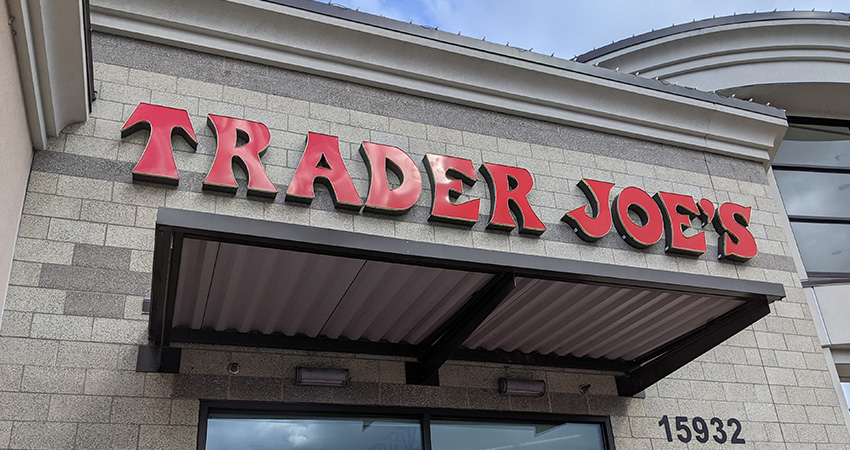Trader Joe’s, the distinctive small-scale-yet-nationwide grocery chain that feels more like a Starbuck’s without the pricey coffee and wifi, has thus far resisted the market pressure to follow the rest of its industry brethren into ecommerce, and explained its rationale in a podcast episode.
In the podcast, Tara Miller, marketing director, and Matt Sloan, VP of marketing, respectively, for Trader Joe’s, do a back-and-forth rap to unpack the rationale behind the company’s business model and why its stores are its brand.
A lot of it has to do with the high costs associated with operating a digital channel, costs that can end up affecting the prices of items on store shelves.
“We love being a real place for a whole bunch of reasons and not just because it’s where we started,” Sloan said. “It’s because we’re good at it, and it’s because we know how to go about it. And it’s because doing it allows us to keep doing it really well, without any of the distractions and all of the costs that ultimately might get passed onto those shopping with us, were we to pursue them.”
It’s not only the costs but the shopping experience that is downgraded by ecommerce, Miller said, an experience which she said makes Trader Joe’s distinctive.
“That experience would not be the same if you were trying to order something from a website that just showed you the products you already know about,” she said. “Walking through the store and meeting up with a crew member who talks to you about a product that just arrived this week in the store. You might not know about that product when you are shopping virtually as opposed to in a physical space. You tend to have blinders on and you see the products you are already looking for.”
Part of that experience, Miller said, has to do with the smaller footprint of Trader Joe’s, an intentional model that not only limits the number of items stocked but also adds to the interactivity between staff and customers.
“It helps us to have a more personal connection with our crew members, with our customers, with the products that we sell,” she said. “There are always going to be costs associated with running a business, but we prefer that those costs be people. We’re familiar with our products, we’re familiar with our neighborhoods, we’re familiar with our customers. That small, more intimate setting really does set us apart from everyone else selling food.”
Over in the apparel section of bricks-and-mortar only, Irish fast fashion giant Primark, a unit of Associated British Foods, continues its steadfast refusal to sell stuff online. The company is opening three new stores in the U.S. this summer – in New York and New Jersey – bringing the count to 20 here, a third of the way toward its goal of 60 doors. It’s launched a revamped U.S. website, but it’s for browsing and store location only.
“At our price points and our basket sizes (ecommerce) doesn’t just take some of the margin; it takes all of it,” Associated British Foods CEO George Weston told The Financial Times.
Primark’s November launch of click and collect in the UK — known as BOPIS on these shores — ended up crashing the website on the first day. It recovered quickly and is expanding the service around London later this year.

